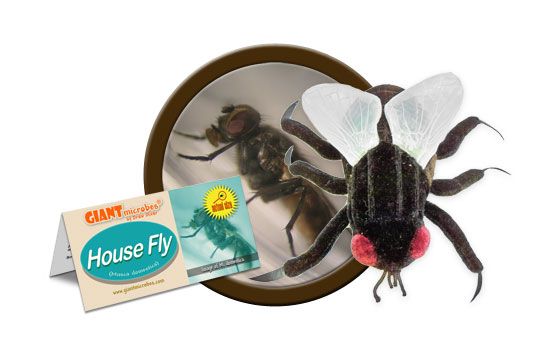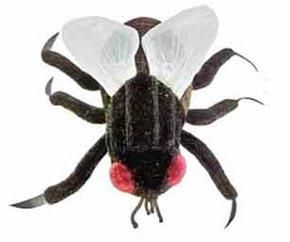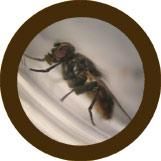House Fly (Musca domestica)
Out of Stock
with pearl and silver wing,
And brilliant eyes and crested head,
no poor or foolish thing!
Product Details
Additional Information
| Sizes | Giantmicrobes are based on actual microbes, cells, organisms and other critters, only 1,000,000 times actual size! Gigantic (GG) 16-24" XL (XL) 10-15" Original (PD) 5-8" Keychain (KC) 2-4" with clip |
|---|---|
| Materials | Plush from all new materials. Stuffed with polyester fiber fill. Surface washable: sponge with water & soap, air dry. |
| Packaging | Each plush microbe includes a printed card with fun, educational and fascinating facts about the actual microbe or cell. |
| Safety | Every product meets or exceeds U.S. and European standards for safety. For ages 3 and up. |
All about House Fly (Musca domestica)
FACTS: The common house fly flaps its wings about 200 times a second, creating one of the world's least sonorous sounds! But fortunately, their buzz is worse than their bite. With only spongy mouthparts and no stinger, the house fly can't prick you (though it's country-cousin, the stable fly, looks similar and can inflict a nasty sting – as can horse flies, and many other relations).
Nevertheless, house flies are much more than just annoying aural afflictions. With a partiality to garbage heaps and excrement, house flies routinely pick up and distribute hundreds of diseases. In fact, a single fly can carry millions of bacteria. You really don't want that fly in your soup!
With a life-cycle measured in weeks, a dozen generations of house flies can be produced in a single year. And since a female house fly can lay up to 1,000 eggs in her time, the numbers quickly become astronomical. (If all the off-spring of all the house flies survived for just the summer, the planet would be 50 feet deep in house flies!)
Fortunately, house flies are subject to a world of dangers, from frogs to flyswatters. Malnutrition dooms most of the rest. Which is just as well, since they feed by regurgitating part of their last meal, along with saliva, onto the fresh dish and then slurp it up. (Yum!) So remember: flies take off backwards – swat behind them.
| Description | Ever been on a farm? Ever been to a dump? Maybe a picnic with friends and family? If so, you’ve probably encountered a bunch of these pesky creatures. House flies are common to poultry farms, horse stables and ranches and can be found in homes as well. House flies feed on fecal matter, discharges from wounds and sores, sputum, and all sorts of moist decaying matter such as spoiled fish, eggs and meat. Because of their feces filled diet, these common flies are known to transmit all sorts of diseases, including cholera, typhoid fever, dysentery, and tuberculosis. That’s why it’s crucial to get rid of these fellas! |
|---|
| Name | Musca Domestica |
|---|
| Actual Size | Less than 4 to 7.5 mm long |
|---|
| Where It Lives | As the name implies, house flies can be found in homes or indoors in corners and edges or on thin objects. House flies can also be found outside, typically on plants, the ground, fence wires, garbage cans, etc. |
|---|
| History |
The house fly branched off the same ancestral tree as mosquitoes and march flies 50 million years ago. The house fly originated in the wet environment of central Asia and fed off of any nutrient-rich substance. The house fly can now be found all over the world, in all continents, in an array of climates, from tropical to temperate, and in a variety of environments, from rural to urban. |
|---|
| Fascinating Facts |
Have you ever seen a house fly rubbings its legs together? House flies do this to clean themselves, since they rely on their compound eyes, antennae, and hairs to sense the world around them. Their small hairs actually serve as taste organs! House flies cannot bite foods. House flies instead sponge up liquids. When dealing with solid foods, however, house flies regurgitate saliva (spit) on the food, which then liquefies the solid food to be sponged up by the proboscis (the long tube-like mouth). |
|---|






